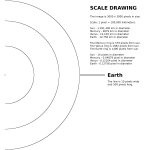That is not any kind of worthwhile answer to his question. 
A worthwhile answer would be to explain how - during that "rare moment of correct positioning" (when it can be seen) - that Venus can be seen at night.
The answer you gave is 100% avoidance - more than anything else it seems to be saying:
"I really have no clue; but, I want you to believe it anyway..."
A worthwhile answer would be to explain how - during that "rare moment of correct positioning" (when it can be seen) - that Venus can be seen at night.
The answer you gave is 100% avoidance - more than anything else it seems to be saying:
"I really have no clue; but, I want you to believe it anyway..."
If Venus were only ever directly between Earth and the sun, it would not be visible to the naked eye because it would be hidden in the sun's glare all the time.
If it is not directly in line, the sun will illuminate it, making it readily visible at least part of the time, which is exactly what we observe.






